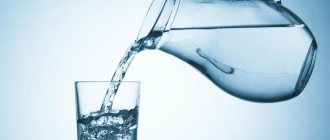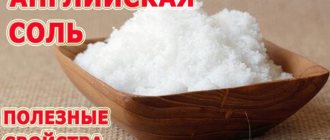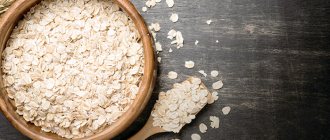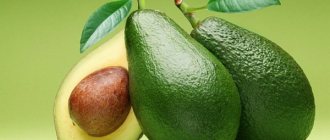Author: Mikhail Ziborov - author of the website makefitness.pro | more details >> I am a swimming coach at a youth sports school and a gym instructor.
Place in the ranking of authors:
17
(become an author) Date: 2020-10-24 Views: 5,281 Rating: 5.0
| All articles by the author >> | Medals articles >> |
Articles are loading...
From the material you will learn:
1. What is edema. 2. How to understand how flooded you are. 3. So does it flood or not?
People often tend to exaggerate the scale of a tragedy and demonize specific products. For example, about 20 years ago it was heard everywhere that cholesterol was extremely harmful. And, accordingly, you need to give up foods (butter, egg yolks, etc.) containing cholesterol.
But time passed, significant evidence and a lot of research appeared saying that we need cholesterol for the synthesis of hormones, vitamin D and much more. And, as it turns out, butter and egg yolks are not at all dangerous if you don’t overdo them!
The same trend can already be seen with other products: today sugar is demonized, they say, it makes you fat; gluten, they say, is the cause of all sorts of disorders. Now we’ve got to dairy and fermented milk products, which cause swelling or cellulite (“flooding” with water), increase general inflammation in the body, etc. We are interested in the swelling from the milk.
What's good about milk?
Let's talk about the facts. Milk, whatever one may say, is a storehouse of useful elements. It is a complete source of proteins, lipids and carbohydrates; it contains essential amino acids and many useful macro- and micronutrients. In addition to the fact that it contains valuable components, milk and fermented milk products perfectly satiate and provide this feeling of fullness for a long time due to the gradual breakdown of protein.
Calcium Essential for bone tissue, three servings of dairy products provide 80% of the daily requirement (confirmed by the Institute of Nutrition of the Russian Academy of Medical Sciences)
Potassium maintains the acid-base balance of the blood and water balance
Vitamin D Boosts immunity and mood
Amino acids Milk proteins contain the full necessary set of amino acids and are easily absorbed by the body
B vitamins An essential and important component of the daily diet: they normalize the functioning of the nervous and cardiovascular systems, participate in cell growth, energy metabolism, and muscle function
What is the effect of insulin on growth hormone?
Growth hormone and insulin antagonists, respectively, oppose each other. Under the influence of growth hormone, the concentration of sugar in the blood increases and this forces the pancreas to produce and secrete insulin to reduce the concentration to normal.
Insulin is simply an anabolic transport hormone doing its job. He is neither good nor bad. It doesn't care whether you're storing fat or building muscle. All it cares about is maintaining blood glucose levels within a normal range. When this level becomes high, insulin is produced, which will quickly ensure that glucose levels are restored to normal.
BUT . Where are we without a but? We do not get any sugar into the blood from cottage cheese, which means that the insulin produced as a result of eating cottage cheese is not an antagonist of growth hormone - purely theoretically and following the laws of logic. Unfortunately, no scientific research has been conducted on this topic, so the question remains open.
The conclusion is obvious: dairy products do NOT interfere with the fat burning process. And by the way, there are studies that, on the contrary, it helps.
Here are the results of the 2011 study “Increased Consumption of Dairy Foods and Protein during Diet- and Exercise-Induced Weight Loss Promotes Fat Mass Loss and Lean Mass Gain in Overweight and Obese Premenopausal Women.” Andrea R. Josse, Stephanie A. Atkinson, Mark A. Tarnopolsky, and Stuart M. Phillips."
Girls with a pre-obesity state were divided into 3 groups in a 16-week training cycle: the first - a group consuming 30% protein (1.3 g/kg), half of which was taken from dairy products ; the second - 15% proteins , half of which are from milk; the third - 15% proteins, without dairy products at all. Calcium intake was 0.3, 1.2, 1.8, respectively, for the third, second and first groups.
Those losing weight were on a hypocaloric diet, implying a negative energy balance of -500 kcal/day. We worked out 5 days a week - aerobic exercise with a cost of 250 kcal per session and performed two strength training sessions per week.
The first group showed a large loss of fat mass, especially in the abdominal area, and a significant increase in muscle mass . While the second and third showed lower loss of fat mass and significant loss of muscle mass.
Well, none of the fitness myths have been confirmed, but then why do people get flooded from cottage cheese?
So what's wrong with him?
Recent studies on the topic “milk - benefits and harm to the body” directly point to the culprit - lactose (essentially milk sugar). This component is poorly broken down in adults: when it enters the intestines, it creates a breeding ground for toxins and harmful bacteria.
You can also increasingly hear statements that milk in large quantities can contribute to the development of a number of diseases - from problems with the digestive system to sclerosis and diabetes. This product should especially not be used by people over 55 years of age.
Well, such horror stories as antibiotics in store bottles, increased levels of female hormones and, finally, swelling and cellulite that milk provokes are inevitable. Let's figure it out.
What is lactose? Is she really dangerous?
Maria Chamurlieva, PhD, cosmetologist, dermatovenerologist at the TORI aesthetic medicine clinic, says:
Maria Chamurlieva
Candidate of Medical Sciences, cosmetologist, dermatovenereologist at the aesthetic medicine clinic TORI.
Lactose is a disaccharide consisting of two simple sugars: galactose and glucose. To assimilate this substance, a special enzyme is required - lactase, which is produced in the human body only during the first few years of life. It is necessary for the absorption of mother's breast milk and obtaining all the necessary vitamins and macroelements. With age, in most people, the production of this enzyme is gradually inhibited and may stop completely,” says Maria Chamurlieva, PhD, cosmetologist, dermatovenerologist at the TORI aesthetic medicine clinic.
Not everyone is able to digest lactose, that's true. But for the most part, this is due to genetic predisposition and is expressed differently in different nationalities. Milk is not digestible by residents of Asia, Africa, South America and some countries where historically it was not a source of nutrition. This does not apply to residents of Northern Europe and Russia - everything is fine with us.
Symptoms of lactase deficiency, as stated in adults, include nausea, flatulence, problems with the stomach and intestines, the appearance of rashes and spots on the skin, dizziness, and weakness.
Have you already found all the signs? Take your time and read on!
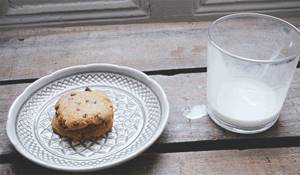
How to determine lactose intolerance?
As a rule, symptoms of lactose deficiency in adults appear no later than two hours after drinking milk.
A milk allergy can only be diagnosed with the help of an experienced doctor. He creates a diet that completely excludes the presence of lactose, and sets a period during which control will be carried out. In parallel, a laboratory study is carried out to assess the presence of carbohydrates, which form the basis of various sugars.
The most reliable information can be obtained by taking a genetic test. By the way, sometimes it can show that lactose is not the problem. Some people experience intolerance to cow's or goat's milk protein.
Does it really contain antibiotics?
Alena Kogotkova, nutritionist, expert on weight correction and the psychology of eating behavior says:
![]()
Alena Kogotkova
nutritionist
Perhaps this is the most terrible and widespread myth of all. They say that manufacturers specifically add antibiotics to extend the shelf life of milk. Of course not. It makes no sense to add antibiotics to milk for this purpose. Temperature treatment and high-quality homogenization are quite sufficient for storing milk. But if inspection authorities discover antibiotics in milk, this will cause an irreparable blow to the manufacturer’s reputation, and the losses will significantly exceed the potential “benefit” from the sale of such a product. So big dairy brands wouldn't take the risk. Russia has very strict standards and if milk does not meet any criteria, it is disposed of.
According to sanitary rules, milk from treated cows must be disposed of within 5-10 days (depending on the drug used).
If control is not thorough enough, it is theoretically possible that antibiotics could leak into the milk of a cow undergoing treatment. The milk from one cow is enough for the entire batch to fail to meet the standards. That is why, by purchasing milk from large producers, we reduce all potential risks to a minimum. “Contaminated” milk will simply not be accepted into the dairy plant. By the way, microorganisms that are used in fermented milk production are very sensitive to antibiotics. Their presence in milk leads to technological problems at a dairy enterprise. Those. It is very difficult to prepare fermented milk products from such milk,” explains the nutritionist in his study.
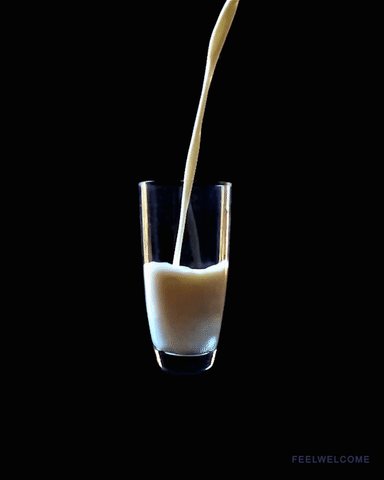
Swelling and salt

Sodium (a component of table salt NaCl) is one of the most important electrolytes in the body. These are electrically charged molecules that, together with potassium, play an important role in the transmission of electrical impulses and the functioning of the nervous system. The body cannot function without sodium.
Sodium also binds water and maintains the balance of intracellular and extracellular fluid, thereby regulating blood pressure - this is one of the roles of sodium. The more sodium in the blood, the more water it retains and the higher the blood pressure.
Refusal of salt during a diet came to the masses from the preparatory diet of bodybuilders for performances, when it is necessary to dehydrate the body as much as possible, but for a short time (!) to draw relief.
When a person completely and permanently refuses salt, he dooms himself to retain fluid from foods that contain natural sodium - for example, tomatoes. In fact, salt (sodium) causes water retention when you eat more salt than usual. And with a salt-free diet it is very easy.

When the salt intake stops, the body tries to retain the available sodium and the little that comes from food (and on a salt-free diet, a couple of tomatoes are enough), and increases the level of the hormone aldosterone, which is involved in water-salt balance. Sodium retention leads to water retention, puffiness and weight gain.
Normal salt intake, without jumps up and down, protects against edema more reliably than a complete refusal of salt. The American Heart Association recommends 1,500 mg of pure sodium per day in food (1).
Another thing is that the Western diet actually has too much salt - in public catering, semi-finished products and various “ready-made” products. Salt is not only a preservative, but also a flavor enhancer (a component of monosodium glutamate). And over time, our receptors get used to constant stimulation, and in order to feel more taste, we begin to salt our food more and more. Therefore, giving up fast food, sausages, pickles and marinades causes sudden weight loss at the beginning of the diet - due to getting rid of excess water.
Does milk cause swelling?
This is one of the main fears of bodybuilders and athletes who are fans of cutting.
They refer to their own experience: even coffee with milk makes you feel “flooded.” But the problem here is not just milk: a strict diet provokes a deficiency of potassium and sodium in the body, and milk is rich in the latter. To escape, the body retains sodium and water. Hello, swelling. It is also true that milk has a high insulin index. But there is currently no research confirming the relationship between dairy consumption and weight gain.
"Here I am"
- But I’m definitely swelling, but I don’t know why, I’m sinning with cottage cheese, but who knows.. I read from one girl that maybe it’s because of the milk!
- If you are swelling, try to identify the causes of the swelling. The milk probably has nothing to do with it. About possible causes in this article “Swelling: causes and remedies.” And regarding “one old lady said”: if I tell you that french fries make you lose weight, will you eat them and hope that the extra pounds will evaporate? A person has his head up so that he doesn’t mindlessly read all sorts of garbage, but analyzes and checks the information. Unfortunately, this cannot be done for you.

But I eat little and very little cottage cheese, but I still feel bloated, and visually I seem “watery”.
Be sure to monitor the water-salt and electrolyte balance in the body. Drink enough water, take 3-5 grams of sodium chloride, 1 gram of potassium, 300 milligrams of magnesium (this includes both food and tablet sources).
If you practice low/no-carbohydrate diets (by the way, why are you doing this, stop it), get ready for quite a “flood” after finishing your diet and returning to a normal, healthy diet. Until your water-salt balance is normalized, you will accumulate water. Many proponents of cutting often mistake this for an instant gain of fat after they “get off” such a “super effective” weight loss technique.
After eating cottage cheese, my stomach growls and it swells, what should I do?
Don’t forget about individual problems (lactose intolerance or allergies to milk proteins themselves), they also affect your appearance and well-being (bloating, indigestion, etc.). However, this has nothing to do with fat accumulation or stopping fat burning.
There is also low-quality cottage cheese (with added starch), the composition of which the manufacturer is silent about, and here the extra unaccounted carbohydrate component will also have its own unexpected effect. Read more about how to determine the naturalness of cottage cheese in the article “Cottage cheese: benefits, composition, calorie content. How to check cottage cheese for naturalness?
Verdict: cottage cheese can cause swelling, i.e. you may be flooded if the water-salt balance is disturbed and due to the personal characteristics of the body.
But not everyone and not always. If cottage cheese and other dairy products make you feel bloated, then you simply don’t have the enzyme to break down lactose, which means you shouldn’t torment your body with “seething.” In this matter, you need to be guided by perspective and a reasonable approach, without demonizing specific products .
source
Do skim milk make you lose weight?
Mikhail Gavrilov, psychotherapist, author of a patented method for correcting eating behavior and weight loss, member of the Institute of Functional Medicine ( IFM , USA)
:
“Low-fat foods can be called healthy and dietary at a stretch. When removing fat from fermented milk products, it must be replaced with something. Otherwise, their consistency and taste will suffer.
What is usually used to replace fat? Or refined sugar, which provides additional calories.
Or a sweetener - a substance that “deceives” our endocrine system and increases cravings for simple carbohydrates. And one more nuance. Low-fat products are often sold in large packages - not 100 g, but, for example, 200. Therefore, there is a risk of eating a heavy dose of sweetener, preservatives, dyes and other food additives that yoghurts, cottage cheese and other dairy products are rich in. I advise you to buy sour cream with a fat content of 10–15%, cottage cheese – 5%, milk and kefir – 1.5–2.5%.”
Summing up
The human body is a very complex mechanism in which everything is interconnected. And it is impossible to say exactly what affected water retention, weight gain or any other processes. So find the optimal balance that suits you. Consult with doctors or experienced fitness instructors who have hundreds of “dried” clients, select dairy products with medium fat content and determine how much cottage cheese, milk and cheese you can eat per day without consequences. Yes, it may take time, experimentation, recording and analysis. But if everything were too simple, then drying would not cause such a stir. After all, it’s always nice to show off your ideal terrain, while others are trying in vain to achieve it.
source
How to choose good milk?
Olga Dvoinishnikova, PhD, endocrinologist, physiotherapist, dermatologist, diabetologist, says:
Olga Dvoinishnikova
PhD, endocrinologist, physiotherapist, dermatologist, diabetologist.
If you choose from all types of store-bought milk, then the “healthiest” one, which has retained at least some degree of naturalness, remains pasteurized. During pasteurization, milk is heated to 67 degrees for 30 minutes. This is the most gentle processing method, used almost everywhere in the world. In this way, the manufacturer kills two birds with one stone - it increases the shelf life of the product and carries out antibacterial treatment.
And we can absolutely say that antibiotics are not contained in fermented milk products, because if they are present, it is difficult to start the process of fermented milk fermentation and obtain high-quality kefir, yogurt or cottage cheese.
